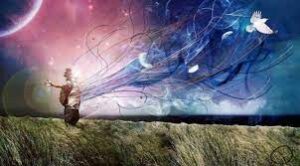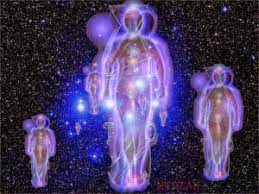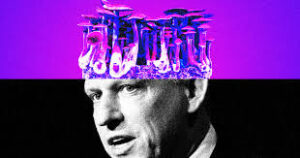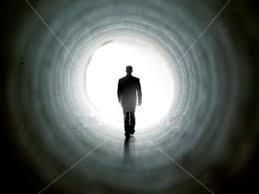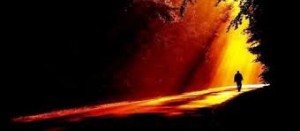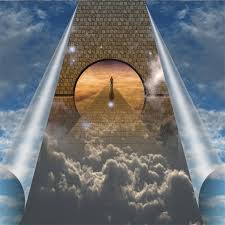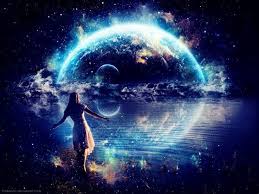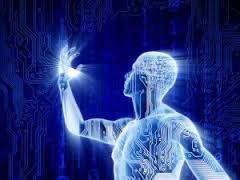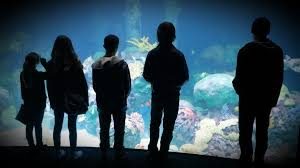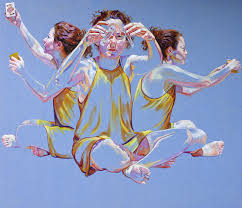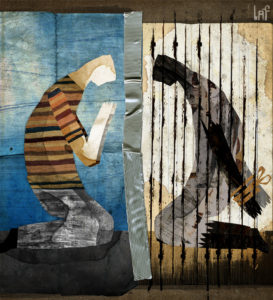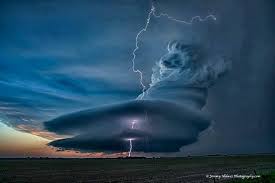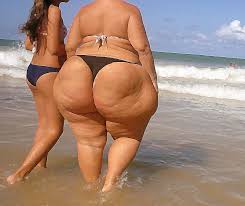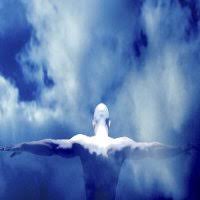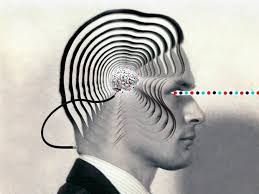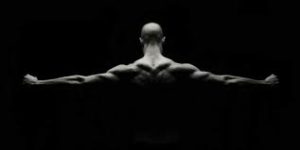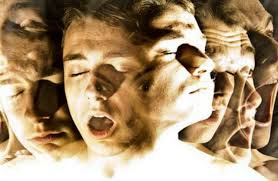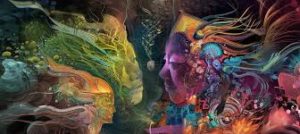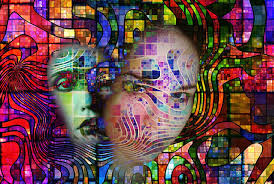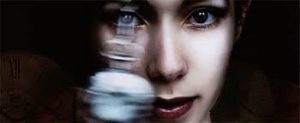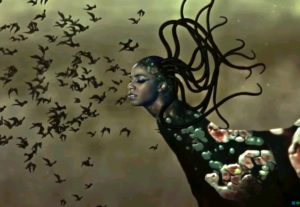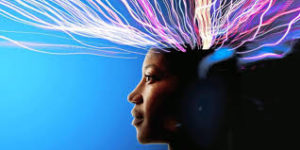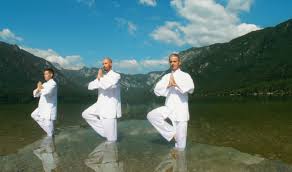Tolerance of Other’s Beliefs
Let us talk about the tolerance of others beliefs. Many if us are under the perceived belief that we do not like the beliefs of other races, thus again making them more intolerable to us. We have decided that our beliefs are the only right ones and discounted all others that do not fit into our picture of a perfect world within our perceived reality. Since we cannot come to terms with and tolerate any other beliefs outside of our limited perception of reality, we condemn the other beliefs to “our version” of “the wrong way,” always maintaining that ours is the right way. There is no right or wrong way in the greater scheme of things. One group will incarnate into a society that has mass beliefs in one direction while another may incarnate into a society with an entirely different set of beliefs. One perceives the other wrong because it does not fit into their mass-conceived system. We are all incarnated in our present physical system of reality for one purpose only and that is to further the evolution of our souls. These perceived ideas are merely obstacles that we have out into place to learn from. The problem is we have not learned much.
It does no good to stay locked in our narrow-minded version of our perceived reality. We are not benefiting anyone , least of all ourselves. When we observe that entire societies have been raised with their own version of a mass belief system, then we are able to understand why it is imperative that we break out of the mold of the masses and analyze those very beliefs and thoughts that brought us to where we are currently in our lives. I have said this many times, “We create our own reality.” We are obsessed with the ideas that we are right and everyone else is wrong. There simply is no such thing . It is a creation of our own mind/thought energy, another attempt of the ego to control our reality.
We have been blindly following the ideas of others without questioning them, taking them for granted. We have simply not allowed any thoughts that do not conform with our strict set of perceived beliefs to enter into our world, thus shutting out the beauty of the world itself. Our own fears of the unknown have entrapped our soul’s existence into a stagnant lumbering existence. We were not allowed to incarnate into our world to lock oneself away from the rest of humanity, yet with our actions this is precisely what we have done. We have shut out anything and everything that does not conform to our standards of our perceived reality. It has not gained us a thing except a lot of fear, anger and hate for the same souls that, when we are not incarnated into a physical body, we have a tremendous love for. We come to the Earth plane and decide that we do not like the packaging or the lessons and experience that other souls have come into incarnation to learn, so therefore we must shut them out of our existence. We don’t like what we see. We don’t want to see. We are afraid to see, so see we shall not. No one is at the mercy of another’s beliefs. Each one of us has the free will to change our system of beliefs.
Questioning the Mass Belief Systems
Light is information. It is the knowledge that is ours, within us and available to us. As we see the fall of our religious institutions, corporations and mass belief systems, know that this is the beginning of this evolutionary process and that we are part of it. Do not be afraid to question the belief systems that have been in place for so long. For they do not allow our soul essence to fully experience itself without guilt or fear, then they need to be examine and alter our beliefs, we can reprogram them, thus altering our own existence and experiences. We can move from one set of firm beliefs into a seemingly completely different set of beliefs by simply focusing on them daily. As our ideas and behaviors change so will our perception of the world around us. Then we have effectively enhanced our experiences and begun the spiritual journey in the evolution of our soul by recognizing the power of our own being. The way to a peaceful existence lies within our thoughts and beliefs.
Many of us are starting to realize the power of our being. We are waking up to the very nature of ourselves and claiming our rights to exist on our planet in a peaceful and harmonious way. The negative ego influences of some of the ones in power have been aware of this for some time and thus we see the aggressive actions taken on the part of those individuals to ensure that they keep their old systems of belief intact. They have been aggressively branching out into all nations in one last-ditch effort to ultimately, in their eyes, control the world and prevent the citizens of Earth from evolving away from the old ways and into the new. The only way humanity to stop this invasion is to start to reject the belief systems of these leaders. Question the validity and motives behind the ideas that are presented by these individuals. As we use our own powers of intuition, we will see that the agenda of these forces is quite self-serving and designed to prevent us from using our own free will to further the evolution of our soul and bring peace and harmony to our planet.
When the ones in power can persuade the masses to believe that killing is justified, then we need to take a good look at the motives behind their beliefs. Universal Law is clear: killing another for whatever reason is a Violation, plain and simple. It is not necessary to rob the life of another to get our perceived point across. It is only our perceived belief and does not reflect the beliefs of others, that is, unless we force it upon them, forcing them into relinquishing their power over their own being. The repression of humanity by those in power is beginning to erode and will no longer be tolerated by the citizens of the planet. Much of the world is in great turmoil because of the actions of powerful political and corporate leaders.
Often the belief systems of many only reflect the visions of a few. Many individuals simply follow the crowd and do not question as to why they are doing so. This is why so many individuals find it hard to change their perceived reality, for fear of not conforming within the structures of the belief systems of the masses. They are reluctant to be the odd one out. It is safer for them to go along with the masses than stop and think for themselves, for in doing so they would then have to confront their own reality and belief systems. If this were done however, the individuals would open up a vast amount of information to themselves about the nature of their being and move forward in the evolution of their souls. We would then be able to use this knowledge to joyously go about experiencing our life as we were meant to do. I am going to give an exercise here that we may use to confront the nature of our beliefs. It is an exercise to allow our own path to our soul’s evolution.
EXERCISE:
ANALYZING OUR MIND/THOUGHT BELIEFS
Let us look at the word right. What does that conjure up in your minds? Good , wholesome, upstanding, religious etc. All qualities that mankind/womankind aspires to have. Then look at the word wrong. What does this conjure up in your minds? Take a good hard look at this. Dark, negative, unsavory, lack of moral ethics etc. I’m sure that you could come up with at least 100 definitions for each word and that is exactly the exercise here. I want you to make two columns on a piece of paper and label the first column positive and the other negative. Here you are to list words that come to mind in your life that you think of as positive or negative. Now look at your list of words that you have organized into two neat columns. As you look at each word, examine your feelings about each one. What kind of thoughts do each of the words represent to you? What or whom do you associate with these words and why? This is the beginning of examining your beliefs, all of them. Notice that when certain words are examined that they also carry with them certain feelings. These feelings are a direct result of your association with the words of your lists. many will make you happy and many will not. Consciously look at all of them. For instance, if church makes you happy, then further explore what it is about the church that makes you happy. Do you love the unity with other humans that are of like mind with you? Most likely you will say yes. Now, what do those like minds have in common? Do they all elevate themselves as having the true right way that humanity should live? Of course, they all agree with your own system of perceived beliefs don’t they? Now, look at the other side of the paper and do the same. You will notice that all those things are in direct conflict with your own idea of your perceived reality, are they not? If you will examine where and how and who put these beliefs into your minds you may start to get the correlation. This exercise is a powerful tool in enabling your conscious mind to be more aware of the beliefs and thoughts of others and how they manifest themselves into your own beliefs. It will stimulate you being into recognizing whether or not it is part of your soul’s true nature to accept the information or reject it.
THE BELIEFS OF OUR LEADERS
This discussion involves the belief systems of the nation’s leaders. Many of the world’s governments are very resistant to any changes. Politicians go into office with high aspirations of manifesting the ideals that they see would and could benefit society only to fall prey to the negative energies that are inherently manipulating the power structures of the system. Their lack of self-discipline and focus on their own power allow them to be sucked into the rituals of business as usual. They soon see that they cannot accomplish their goals without stepping on the toes of the forces that have weld the power. They are entrapped into a system of beliefs that is not their own, however to survive they must succumb to the wall of the controlling energies. They have little or no regard for the citizens of Earth as they are enveloped in the unlimited power that they now seem to possess.
The mass belief system that has been maintained by our leaders is starting to crumble. The leaders of the Western world have been quite successful at disregarding the cultural traditions of other nations, thus causing much strife within those nations. There is a constant battle between people of other nations to aspire to be westernized and still remain in the traditions and mass beliefs of their cultures. There is much resentment over the values of the Western world and many people of so called impoverished nations feel helpless in their situation and powerless to do anything about it. The very nature of their frustration is then taken out in an aggressive, negative way to try to regain their own power. There is much anger over the doctrines of Western civilization. Many citizens of other cultures are rooted in the beliefs that the western world with all its riches is evil. The Western world has been hoarding all the resources of the world for their own personal gain and ignoring the plight of the rest of the world. They know this and this angers them. They do not like it when the core of what they perceive to hate is knocking on their front doors. Their belief system has taught them that it is wrong to have too many material possessions, yet when we look at the leaders of these nations they are swathed in as many material possessions as they can create for themselves. The rest of their nation is bathed in poverty and resentment. The only way they have to regain their power is to lash out at the perceived enemy. Since it is a mass system of beliefs the anger and resentment is then propelled by the masses of those nations. The natural act of aggression of these individuals has been taken into the negative arena. They see no other way of regaining their power other than to lash out at the nations that they perceive have taken it away from them. The beliefs are so strong and there are so many individuals in this situation, we can see that it could create a disaster of mass proportions.
If the frustration continues at the present level there could be a worldwide war ending with the destruction of our planet. The Western world and some of the other nations of power can no longer afford to continue on their paths of domination. All citizens of all nations must be treated as though they are an important part of the world and not though they are an important part of the world and not shoved under the rug in favor of politics and corporate greed.
It is a shame that the Western world has been able to migrate its influences over much of the planet thus forcing many cultures to either accept these changes or fight for the sovereignty of their nations. Within those societies we have the pent up energies of those who have been forced to relinquish their own power to perceived higher forces and have been downtrodden with enormous amount of guilt about their very being. They have been repressed to the point of combustion and as mother Earth acts out her own way against the atrocities against her in the form of natural disasters, so it is that mankind/womankind is doing the same. The basic free will of mankind/womankind is being challenged at this point in our planet’s history like it has never been before.
Most of the middle East appears to be in for a slow awakening. The energies of Hierarchy are being concentrated on this area at this time to diffuse the situation but it is not an easy task. The people of these nations are entrenched in their religious beliefs, misguided as some of them are. It is a daunting task and will require much energy from the masters for many years to realign this area of the world. It will be just as hard for them to realign the Western world, for they are the ones who will likely put up the most resistance to sharing the resources of the world. Either way, the world as we know it is in for some positive changes that will affect every living thing on the planet. We have seen that mankind/womankind is starting to awaken to these and other injustices perpetrated by the ones in power. More and more individuals who are truly visionaries will soon start to replace the ones who have kept the great nations of the world in the dark. Just as we see the fall of our corporations we will also see radical changes in our government and the media.
OTHER PLANETARY LIFE FORMS
I would like to discuss other life forms and how our thoughts affect the entire Universe. Our thoughts of negativity swirl up into the atmosphere and cling to the spatial grids of the Universe. They must be constantly neutralized and sent back to our planet with an abundance of love so that they do not affect other life forms in the Universe. Beings of Light are very sensitive to the energy created by our thoughts and have been surrounding our planet for years neutralizing them. We cannot see them for they are of etheric matter undetectable to the third-dimensional vision. Much of humanity still clings to the ideas had beliefs that the Universe involves them alone. However, this is far from the case. We have closed our minds and erected giant barriers against our soul’s evolution and other life forms. We have encased ourselves in a dark cocoon and locked the door, fearful of what may be out there. For us to discover the true nature of our soul, it would benefit us to open our mind to realities other than our own limited perceptions of self. There are many, many inhabited planets in our solar system and others. There are also many types of bodies, not always physical. Some are etheric. Mankind’s/womankind’s body is designed for Earth’s three-dimensional residency and is our vehicle for expression and communication. Our etheric body is our soul and it is within the realms of our physical body. It operates our physical body much as we operate a car. There are many other body types available to beings based on their point in evolution and the planets they choose to experience life on. They don’t necessarily
have to be flesh and blood like we have on Earth.
Many planets that we would deem uninhabitable are teeming with life. I will give an example: the planets Venus and Sirius are filled with the most peaceful, loving beings in the Universe. It is a place many of us often go to. In our third-dimensional perceived reality, we often have chosen not to acknowledge other life forms due to fear and our limited senses as to what is out there. We cannot see beyond the vision of the third dimension unless we have developed our etheric vision as a few of us have. When our etheric vision is developed we will be aware of a whole new world. That world will be in the forth dimension and eventually higher and with that we will be able to see and communicate with other Beings of Light. Many of us now are able to receive transmissions telepathically from Beings of Light and acknowledge them while also separating them from our own thoughts. Many of us though would appear to not be able to do this. That is only because we are not willing. Telepathic communication is available to all the method of communication is our future reality. As we consciously start to align our energies with the will and the plan of The Creator, these abilities will open up to us.
It is imperative that we live the life that we have chosen on Earth with the utmost of respect and love for our fellow human beings. We cannot make the transition in consciousness without changing our attitudes about each other. Anyone choosing to experience life at this time on planet Earth is learning some very valuable lessons about the effects of negativity. The great majority if the rest of the beings within the multitudes of solar systems do not experience negativity. This experience has been assigned to the inhabitants of Earth at this point in our evolution. Beings of Light carefully monitor how much the influence of negative energies are affecting the planet. If individuals on our planet continue on their present course of destruction they will miss out on our impending evolution and be left behind. These unfortunate souls will be sent back to the third dimension or offered lives in a two-dimensional reality where they will be able to enjoy the fruits of their greed and negative behavior. The souls that persist in their lifestyle of pillaging the planet and each other will be left in the lower dimensions until they seek the light. The rest of mankind/womankind are going to evolve with Earth, where all will reside in peace with a greater awareness of the connection of their souls to each other.
If our leaders attempt to use nuclear power for mass destruction, Beings of Light from the higher dimensions will interfere. Permission has been given to do so. Mother Earth will not be allowed to be destroyed by the fanatical behaviors of those who perceive themselves to be in power. Beings of Light are sending their energies to awaken mankind/womankind and assist with the transition of their consciousness. It will take a willingness on our part to promote peace in our world and take care of each other. It means using our free will and the energy of our being wisely to create a new reality on our planet. With our powerful thoughts we will have no problem doing this. For the stubborn few that insist on creating mass destruction and dominance over their fellow human beings and aligning their energies with the negative influences, the time is now to move towards the light. Some of us have already started to awaken. Stay awake, for if we close our eyes again we will fall back into our cosmic slumber and be left behind. Each one of us radiates with The Creator’s love and if we look for it in every being we encounter we will find it is there. Open our hearts and minds to being more loving and compassionate towards each other because we are all brothers and sisters evolving together. When we help another, we are also helping ourselves and both of us will benefit in our evolution. Forget about what people will think about us because it matters not to the soul. Do what you-the-soul knows is right in our relationships with others. The ego will always try to foil any attempts of the soul to circumvent its authority or challenge it by creating doubts or making one feel fearful of reaching out to others for fear of rejection. The only thing that is rejected is the ego and with this understanding one can certainly move always from that arena and let their soul shine through.
RE-SCRIPTING OUR FUTURE
One of the areas that the ego likes to control is our emotions. Emotions come from the solar plexus area and are astrally grounded. At present in our evolution emotions have come to the boiling point and saturation levels are high as humanity is getting ready to make the transition of consciousness. This is to be expected, as there are many are as of our present reality that will start to break down as our consciousness makes the shift. Right now the third dimension is astrally polarized but as we move from Astral polarization to mental polarization we will start to gain control of the emotions. This stepping up will also begin to change the vibrational rate of the planet and its inhabitants. As the vibrational rate of the planet changes, the energy component of the beings that occupy it will move into a peaceful realm that has not been encountered in thousands of years. As the planet moves through this high energy field it will eventually move even further in tis higher-dimensional fields and complete the next phase of its evolution. The awakening of mankind/womankind is happening now. We are essentially re-scripting our future lives
during this awakening.
The future of humanity holds endless possibilities for peace. As our vibrational hum is raised so is our consciousness thus affecting our future with our future lives. Since we are able to affect our past, present and future with our thoughts and beliefs, what we focus our energies on now will either propel us into our new level of awareness or leave us behind in the lower dimensions of negativity. As more and more of us examine our beliefs and start to awaken to the purpose of our soul’s existence, we will naturally gravitate into higher vibrational frequencies. As humanity loses its fears and we begin to love one another, humanity evolves.
As many or us are now awakening, our souls are starting to radiate a brilliant light. As we move our energies into practicing unconditional love for one another, we are by our own thoughts moving the planet into a higher vibrational hum. many of us are very knowledgeable on the effects of energy and how it can be manipulated. As Beings of Light we are all energy. Humanity has already awakened to the creative abilities of its creature-hood and is now starting to focus on the evolution of its soul. As we start to awaken from the cosmic slumber that we have been in for so long the receptors of our neuro-cellular system are being charged with electromagnetic energy. Our planet too will be charged and the purification process will begin. The thoughts of many will create a positive radius of energy bathing the planet. The Earth will move into a tranquility unknown to mankind/womankind and eventually elevate itself into higher levels of harmonic vibration. It is not impossible to untangle ourselves from our perceived sets of beliefs and move our consciousness in the direction of Divine Light. Using some of the tools that I will provide , this should be an easy task for those of us who truly wish to evolve.















